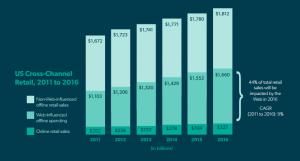Understanding Net Promoter Scores
In the old days there was simply “the customer,” a faceless, nameless entity that bought our product and kept the production lines humming. To the extent that we thought about customer satisfaction, we were content to look at an average. We didn’t think at all about differentiating between a good customer and a bad one.
Over a decade ago, that all changed. In 2003, Bain’s Fred Reichheld and other colleagues (most notably Rob Markey) started to popularize the idea of the Net Promoter Score (NPS). You’ve likely seen NPS in action if you’ve ever answered a survey that includes the key question: “Would you recommend us to a friend or a colleague?” These questions are usually coded in a 0-to-10 scale as such:
- Score 9 – 10: Promoter
- Score 7-8: Passive
- Score under 6: Detractor
The NPS result is simply the difference between the percentage of promoters and detractors.
While the Net Promoter Score is still controversial among academic researchers for a variety of reasons (e.g., how strongly it correlates to future profits), it has become almost universally accepted in practice as a reliable measure of customer satisfaction and overall business performance. It may well be the most influential customer metric at the C-level, and it has greatly enhanced customer-centric thinking for countless organizations around the world. Unfortunately, it’s also a metric that can lead to some seriously distorted actions when it is viewed or used the wrong way.
The Costanza Complex: “I must be liked!”
“We can’t have this many Detractors!” companies say after looking at their NPS data. “We’ve got to fix this! We’ve got to make them love us!”
As a result, many NPS-obsessed firms have become focused on identifying detractors, figuring out what ails them, and making changes based on their complaints.
It’s easy to understand the urge to “fix” these customers. A low Net Promoter Score can almost feel like a personal slight, particularly to people whose job it is to manage customer relationships. It’s a visceral reaction to negative feedback.

Truth be told, however, it’s also a matter of convenience. Marketers prefer the enemy they know. They would rather invest their resources trying to win over the customers they already have. The alternative — heading out into the Great Unknown in search of better customers — is a far more daunting task.
You’ll often hear marketers repeat the old marketing adage: “It costs 10 times more to acquire a new customer than it does to retain an existing one.” While there is some truth to this maxim purely from a cost perspective, it fails to take one important rebuttal into account: What is the net value derived from trying to make so-so customers love you?
The Alternative: Customer Lifetime Value
Here’s a harsh truth: detractors are expensive to “fix,” and the rewards for doing so are often nothing to brag about. It’s also true that great customers may cost you more to acquire, but they bring far more to the table than a mere bump to your Net Promoter Score. To understand why, it helps to look at customer loyalty and satisfaction through the lens of customer lifetime value (CLV).
One of biggest advantages of CLV-based analysis is that it allows you to see the relative value distribution across your entire customer base. Your highest-end customers are so much more valuable than your lowest-end customers that there is almost no comparison. The variance of that customer value distribution is much wider than most marketers realize. Certain high-value customers may be worth not 10X but 100X or more relative to low-value customers.
Here’s another shocker: Net Promoter Scores do not always align with a customer’s value to your brand. We analyzed customer lifetime value for one of our clients (an online pharmacy) and found that there was an extremely wide range in CLV among those who gave the same Net Promoter Scores. Not all promoters represent high value, and not all your detractors are low-value. Read more about our research study.
Save Your Best Efforts for Your Best Customers
With this information in mind, are those low-end, least-satisfied customers really worth the effort to “fix”? In terms of dollars and cents, winning them over won’t have much of an impact on revenues (and especially profits). Perhaps it makes more sense to simply tolerate a certain number of detractors and instead focus on trying to find more promoters.
Moreover, it can be extremely costly (or impossible) to permanently change the sentiments of low-satisfaction customers. There has been a lot of research on this over the last few years, and the results are highly consistent. There’s no reliable method for improving satisfaction among detractors. Even when one method works, the results are often transient. It’s not at all clear that the associated costs are justified in the long term.
A Radical New Approach
Why not find out what makes your promoters fundamentally different from your detractors — compare their profiles and look for systematic differences across the two groups? This may include demographics, media habits, channel preferences, response to marketing activities, or a variety of other observable (and targetable) factors. Then, firms can invest their resources to find more people like them. Instead of turning detractors into promoters, we should be cloning promoters.
I say, “Let’s live with the detractors.” Not every customer is going to love you, and there’s not much you can do to change their minds. It’s a fact of life, so why not just accept it and move on? It’s better for your budget, your ROI, and your sanity.
When it comes to customer centricity, my mantra has always been “celebrate heterogeneity.” That’s very different than striving to make every customer the same, which is, unfortunately, what too many companies are trying (and failing) to do. Don’t take it personally that many of your customers are so-so at best. That’s OK — that’s how it works in every market. Learn to live with them, but focus your efforts on the more valuable ones.
To learn more about how to build a retention strategy around CLV insights, download this free white paper: Download Now.
A version of this post originally appeared on the Zodiac blog.
Business & Finance Articles on Business 2 Community(263)







